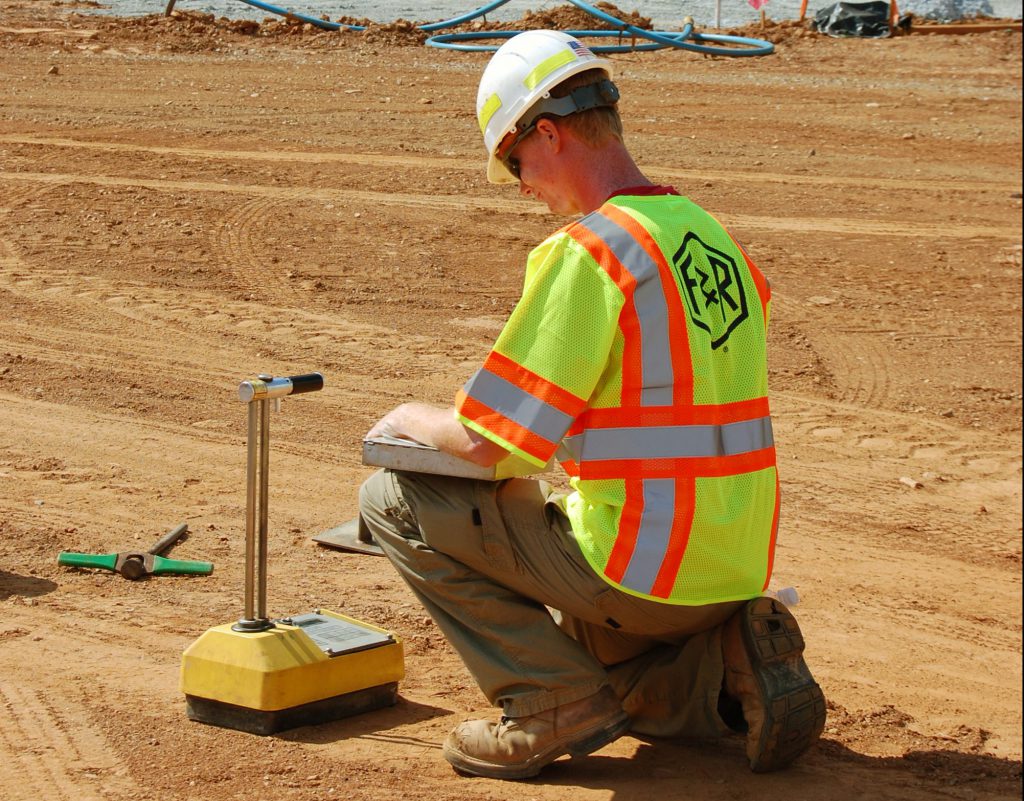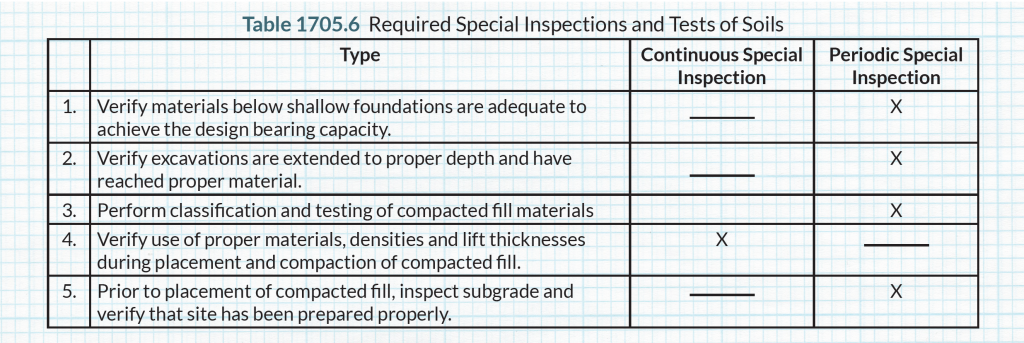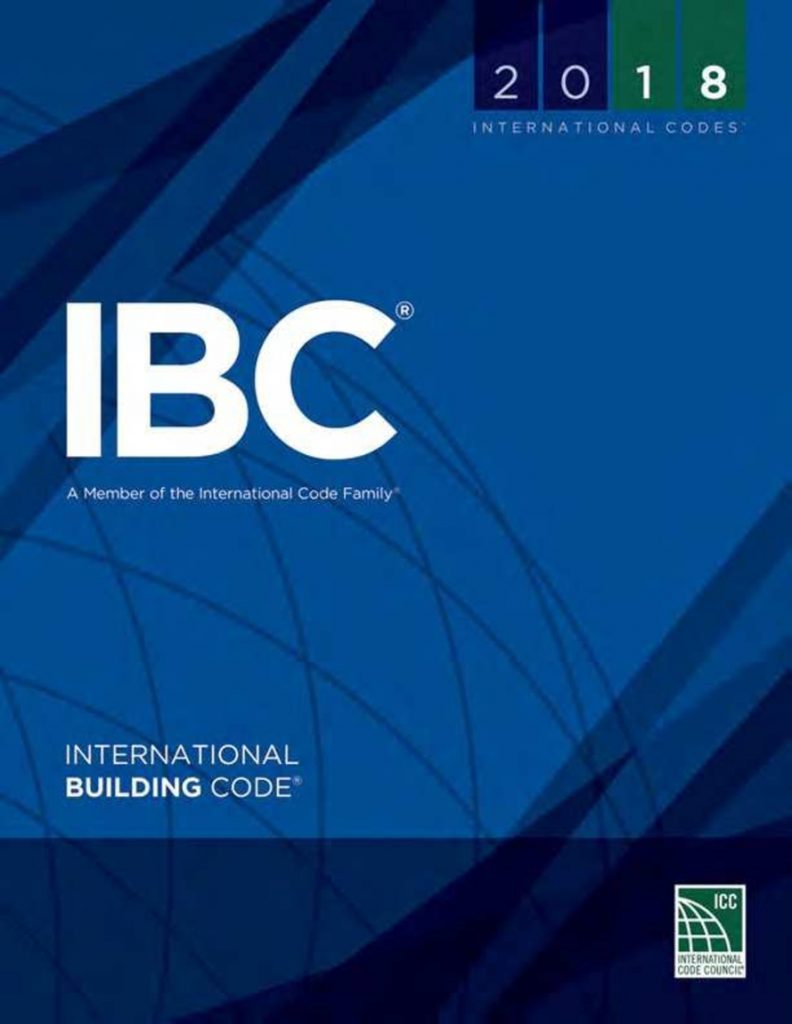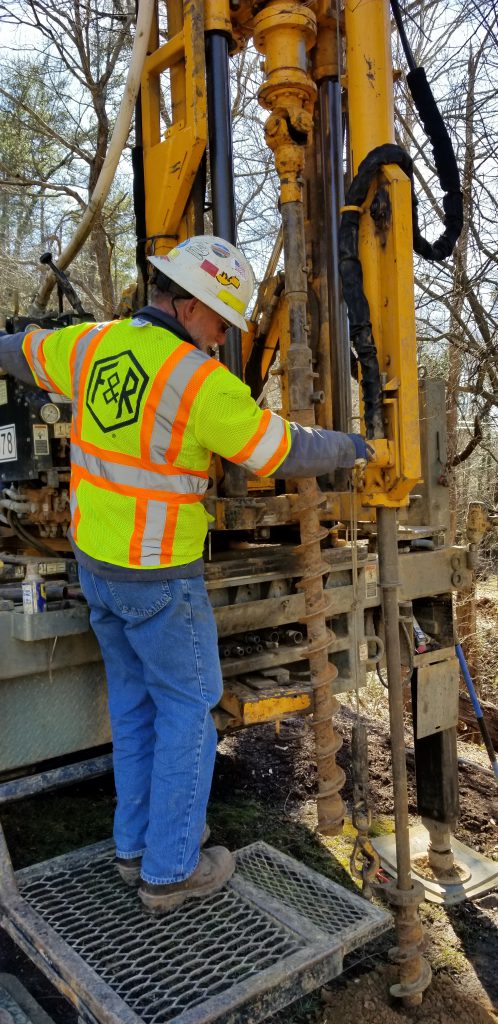
All the Dirt According to IBC
IBC Chapter 17, section 1705.6 and Table 1705.6 only allots about one-half page to soil special inspections required by the code when you discount the narrative regarding deep foundations and helical piles foundations. This small amount of verbiage dedicated to soil special inspections in sections 1705.6, 1705.7, 1705.8 and 1705.9 could lead you to believe that soil special inspections are not demanding, thorough, comprehensive and extensive. Be assured that IBC code required special inspections are all of these things and more. Please read on!

IBC section 1705.6 Soils. Special inspections and tests of existing site soil conditions, fill placement and load bearing requirements shall be performed in accordance with this section and Table 1705.6. The approved geotechnical report and the construction documents prepared by the registered design professionals shall be used to determine compliance. During fill placement, the special inspector shall verify that proper materials and procedures are used in accordance with the provisions of the approved geotechnical report.
The last sentence of IBC section 1705.6 instructing the special inspector to verify that earthwork procedures and materials comply with the geotechnical report is HUGE. The average geotechnical report is probably 30+ pages in length and often is comprised of an additional 20 to 30 pages of appendices, laboratory test data, reference standards, etc. Project compliance with the geotechnical report is code driven and much of that compliance must be observed (and verified) by the special inspector during construction phases.

Other than section 1705.6 and Table 1705.6, Chapter 17 of IBC does not stipulate any other special inspections pertaining to soils; however, IBC Chapter 18 sets forth some soil special inspections which will be addressed later in this article. The tabular formatting of soil special inspections in Table 1705.6 clearly conveys the requirements for determining soil-bearing capacity and for testing and inspection of soils for controlled fill. Inspections prior to fill placement include verifying that the site preparation meets specified (IBC) requirements including proper excavation depth, removal of all deleterious material and any other special requirements that the soils engineer deems necessary for the design (see items 1,2 and 5 of Table 1705.6.

Verifications of the fill material and the placement operation are addressed in items 3 and 4 of Table 1704.6. Without observing and documenting that the proper material is used and the specified compaction techniques and lifts are employed, the specified load-bearing capacity may not be achieved and excessive settlement may occur. A major factor in the design of the fill is the in-place density. This evaluation is needed so that the compaction methods used during construction phases result in adequate soil-bearing capacity which limits resulting settlements that are within acceptable ranges for the structure and site specific soils.
When it comes to building stable and safe buildings that will function as they are designed to, two of the more important factors (geotechnically speaking) are the design load bearing capacity and the degree of allowable settlement. The bearing capacity of soil is the maximum average contact pressure between the foundation and the soil which will not produce shear failure in the soil. Allowable bearing capacity is the ultimate bearing capacity divided by a factor of safety.
A geotechnical investigation is required by IBC, Chapter 18, section 1803 and a report must be provided which would list the soil criteria that must be verified by the special inspector during construction phases of the project. Section 1804.5 clarifies that compacted fill used to support foundations must be in accordance with the criteria of an approved geotechnical report. It is important to understand WHY the code states that the “geotechnical report and the construction documents shall be used to determine compliance”. Soils and earthwork phases of construction does not include the myriad of reference codes associated with other building materials. All of the other building materials in a building (wood, concrete, masonry, steel, etc.) have dozens and even hundreds of reference codes and standards to monitor compliance of construction methods and construction materials with the general building code. The compliance of soils beneath our buildings, however, pretty much depends on a few paragraphs in IBC, chapters 17 and 18 plus a few reference standards cited by IBC to measure (soils) code compliance PLUS the compliance criteria set forth in the geotechnical report. The special inspector should always have a copy of (and be familiar with) the approved geotechnical report on the project because the code requires that the special inspector verify compliance with the geotechnical report during construction phases when the geotechnical engineer (of record) is not present on the project.

In addition to table 1704.6 in IBC, Chapter 17 along with a couple of paragraphs of narrative which definitely sets forth certain minimum special inspections and tests regarding soils, IBC Chapter 18 “Soils and Foundations” also addresses numerous special inspections and tests that must be provided during the earthwork phases of new project work. The real problem that manifests itself on many projects is that a lot of the required special inspections and tests stipulated in Chapter 18 regarding project soils is never done because there is no geotechnical report (to mandate them). This is because the Chapter 18 narrative is addressing all of the special inspections and testing that SHOULD be included in the geotechnical report and when the geotechnical report doesn’t exist, then the numerous special inspections and tests addressed in Chapter 18 (for inclusion in the geotechnical report) are often never performed.
Some of the inspection tasks and tests referenced in IBC Chapter 18 deal with laboratory soils classifications tests to identify the classification of the site soils and to determine which soils are satisfactory to use and which soils are not satisfactory to use. Some of the Chapter 18 laboratory tests are used to determine the maximum density of the site soils as well as moisture-density relationships of the site soils and this laboratory data is used when monitoring fill placement to verify that the specified minimum relative compaction is being achieved by the grading contractor. Proper compaction of site soils are necessary in order to achieve the design bearing capacities required and anticipated settlements will be within the range stipulated by the project geotechnical report. All of this laboratory data also enables the geotechnical engineer to determine maximum allowable lift thicknesses in the field and types of soil density tests as well as settlement estimates and design bearing capacities. The Chapter 18 narrative related to site soils covers a lot of important issues that must be addressed during earthwork operations including placement of backfill materials, flowable fill, slopes, and limitations on fill and grading in flood hazard areas.
At the risk of being redundant, while the inspections and tests addressed in Chapter 18 are “ear-marked” to be included in the geotechnical report, the inspections and tests stipulated are NO LESS important in the absence of a geotechnical report. It is true that many new construction projects are designed and built without a subsurface investigation and geotechnical report ever having been done. The IBC code requires that each project have a geotechnical report; however, the building official can waive the requirement for the geotechnical report if certain soils data is available from an adjacent project (Exception in IBC chapter 18, section 1803.2).
But Wait, We Have a Lot More to Say!
CODE issues got cracking up? For a complete picture of the Code and how it relates to Special Inspections, F&R would love to provide a virtual (for the time being) AIA accredited Lunch & Learn presentation to the professionals at your firm. Contact Alan Tuck for more details at: atuck@fandr.com


